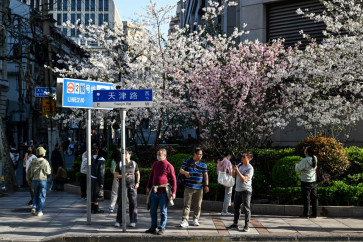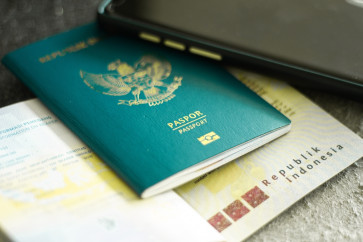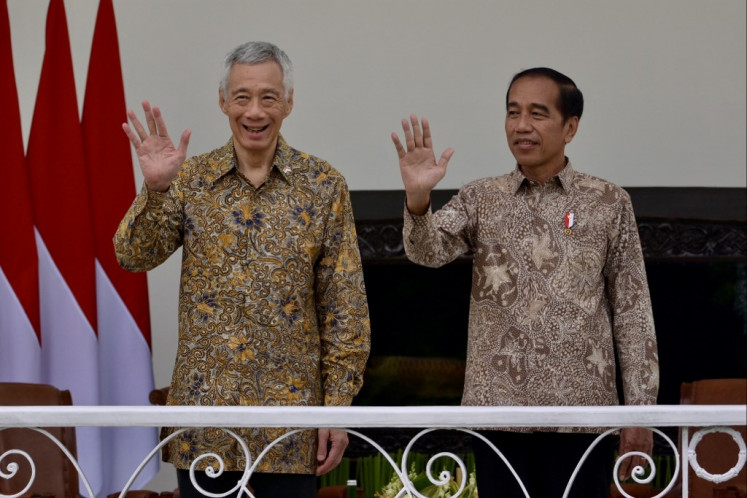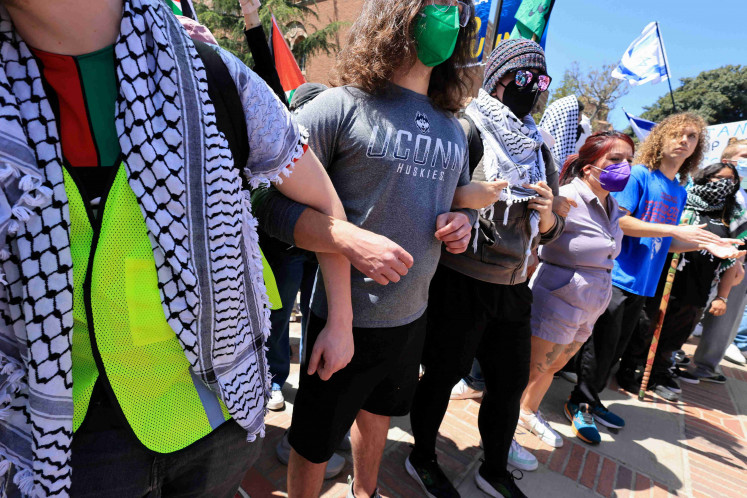Enhancing Air Force’s MOOTW capability
The Air Force owns a crucial role in the battle against the coronavirus as in disaster relief operations in general.
Change Size
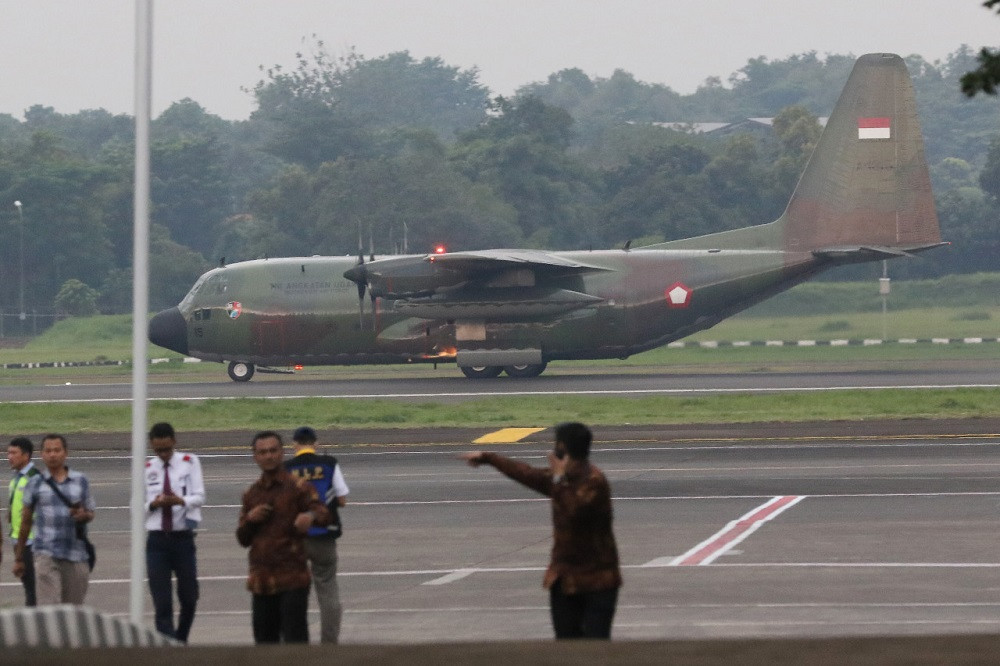
F
or decades, the Indonesian Air Force has been playing a miniscule role compared to the other services. It is no secret that the Indonesian Army holds the golden boy status within the country’s military (TNI).
We can also consider Indonesia’s Air Force to be a small one due to its limited depth and the country’s inadequate industrial capability to expand the service. While the TNI has embarked on its modernization program via the Minimum Essential Force (MEF) program, altering the military’s inward-looking mindset is not an overnight job.
Such a situation in reality preserves Army domination within the TNI. Nonetheless, the COVID-19 pandemic may offer a blessing in disguise for the Air Force.
Indonesia’s large and archipelagic territory certainly prevents smooth land-based transportation. The country also experiences a relatively high resources disparity between big cities on Java, the most populous island in Indonesia, and outer Java regions. The same situation applies in the medical sector, with most of the sophisticated tools and infrastructures located on Java.
The onset of COVID-19 certainly compelled the government to stretch and distribute its limited medicinal resources to outer islands. Here we can see that the Air Force owns a crucial role in the battle against the coronavirus as in disaster relief operations in general.
Involvement in military operations other than war (MOOTW), particularly disaster relief, is not a strange activity for the Air Force. Although the service has been actively engaging in disaster relief, such activities were mostly done within Indonesia’s territory. The Air Force sent its Hercules C-130 twice for disaster relief to help remedy the devastating impacts of Myanmar’s Cyclone Nargis in 2008 and the Philippines’ Typhoon Haiyan in 2013. In addition, the Air Force delivered aid to Bangladesh when a massive influx of Rohingya refugees entered Cox’s Bazar in September 2017.
Meanwhile, in the domestic realm, the Air Force’s disaster relief efforts were not only distributing aid, but also patrolling, conducting cloud seeding and taking part in search and rescue missions. Moreover, the Air Force utilized a wide array of aircraft types for the jobs, including jet fighters. The service employed F-16 and the already retired Hawk Mk-53 for forest fire detection patrol. The activities were often carried out while doing regular training. Here we can see that the Air Force maximized its finite resources to serve various purposes.
However, most of the time the service deployed its C-130 and CN-295 for disaster relief activities. In addition to the planes, the Air Force also occasionally sent manpower, particularly its Special Forces (Paskhas) for labor intensive disaster management, such as extinguishing forest fires. In this case, the Paskhas mainly worked together with personnel from the National Disaster Mitigation Agency (BNPB) or the local police.
During the COVID-19 outbreak, the Air Force has been primarily handling the distribution of medical supplies to areas outside Java island. The Air Force utilized C-130, CN-295 and B-737 transport aircraft to serve the purpose. Besides distributing logistics, the service also employed its Hercules planes for evacuating Indonesians from Wuhan and collecting medical supplies from China.
On some occasions, the Air Force deployed its manpower to distribute masks and hand sanitizer to local communities near air bases. Furthermore, some TNI air bases organized blood donation to help the Indonesian Red Cross (PMI) maintain blood supply, which has been affected by the social distancing measure.
Although MOOTW are part of the Air Force’s duty, the COVID-19 battle demonstrates the integral role of the force in alleviating the disaster’s negative repercussions. First, the rapid spread of the virus and Indonesia’s geographical terrain do not only require a prompt response, but also the ability to reach remote areas. The Air Force’s transport aircraft fleet has the capability to quickly distribute aid to outer islands.
Second, the air bases, together with the Army’s territorial command and naval bases across the country possess a crucial role in patching the poor infrastructure at the regional level. Some of these air bases offer medical services as well as places for quarantine. We can see that these facilities form a string of pearls network that sustains the battle against the virus in Indonesia.
The case of the Air Force contains a few lessons that we can draw to increase the relevance of a small air force. First, developing a niche capability that covers the land and sea force’s shortcomings. Although such an idea sounds cliché, air forces often neglect it.
For example, platform acquisition for the Air Force tends to overemphasize jet fighters and pays little attention, if not neglects, transport squadrons, which the Air Force has been doing. On the one hand, the Air Force has been showing significant usefulness in disaster relief. On the other hand, the development of aid distribution capability has received little attention from the authority in the past years.
In fact, many of the Air Force’s Hercules planes have been involved in serious accidents, allegedly due obsolescence. Furthermore, the modernization program under the MEF for the Air Force focused largely on rejuvenating and increasing the technological advantage of jet fighters.
Next, type of emergency and geographic location may actually propel the centrality of even a small air force. Indonesia’s archipelagic terrain and the wide spread of COVID-19 caused the Air Force to become the best answer to increase the chances of beating the pandemic, as the other services do not have the capacity to do so.
Given its integral part in times of crisis, improving the readiness of the Air Force’s disaster relief capability is a necessary requirement. The Air Force can start to fulfil this prerequisite by upgrading and refurbishing the existing Hercules C-130s like the service did to its F-16 jet fighters recently.
***
The writer is visiting fellow at S. Rajaratnam School of International Studies (RSIS), Nanyang Technological University, Singapore, with research interests including Indonesia’s military transformation and civil-military relations in Southeast Asia.

